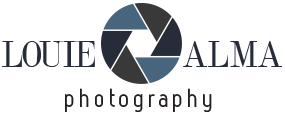Stunning Low-Light Photos with Any Camera You Own (VIDEO)
Low-light photography can be quite a challenge whether you’re shooting the field or indoors in a dim room with available light. Today’s quick tutorial with Anthony Crothers is for those of you who are struggling with blurry, grainy photos in situations with the less-than ideal illumination.
Crothers is an experienced British pro with 35 years behind the lens and two decades as an instructor. The five beginner-friendly tips demonstrated in this episode work wonders on DSLRs, mirrorless cameras, and even with smartphones of all brands. In other words, no expensive gear is required.
In barely six minutes you’ll learn the importance of stabilizing the camera and how to take advantage of existing light sources within a scene. Crothers also demonstrates his method for slowing down the camera’s shutter, opening up your aperture, raising ISO, and how these key variables interact.
As Crothers says, “these simple techniques are perfect for concerts, cityscapes, indoor events, or any time the light is low.” The first step is stabilizing the camera on a tripod or other solid support because dim conditions force you to use a slow shutter speed to compensate for camera movement—the root cause of blurry photos.
It’s also helpful to employ the self-timer or a remote release so you don’t inadvertently jar the camera when pressing the shutter button. Shooting with the lens wide open also brightens a photo by letting more light reach the sensor, but it’s important to understand how wide f/stops affect other attributes of a shot like depth of field and intentional background blur.
Another point of compromise is slowing down the shutter speed because, once again, more light will enter the camera. Crothers offers recommended settings for several different situations indoors and out. And this means a shutter speed of half-a-second, two seconds, or even longer. Some cameras, including modern phones, offer a Night mode that does everything for you.
Crothers reveals a couple more very effective tips as the video proceeds, so follow his expert advice and you’ll own the night from now on. Then pay a visit to his popular YouTube channel for more simple tips and tricks.
And for those of you who prefer shooting Jpegs rather that Raw files be sure to watch our earlier tutorial with another accomplished pro who demonstrates several camera settings and editing techniques for maximum image quality and post-processing flexibility.





